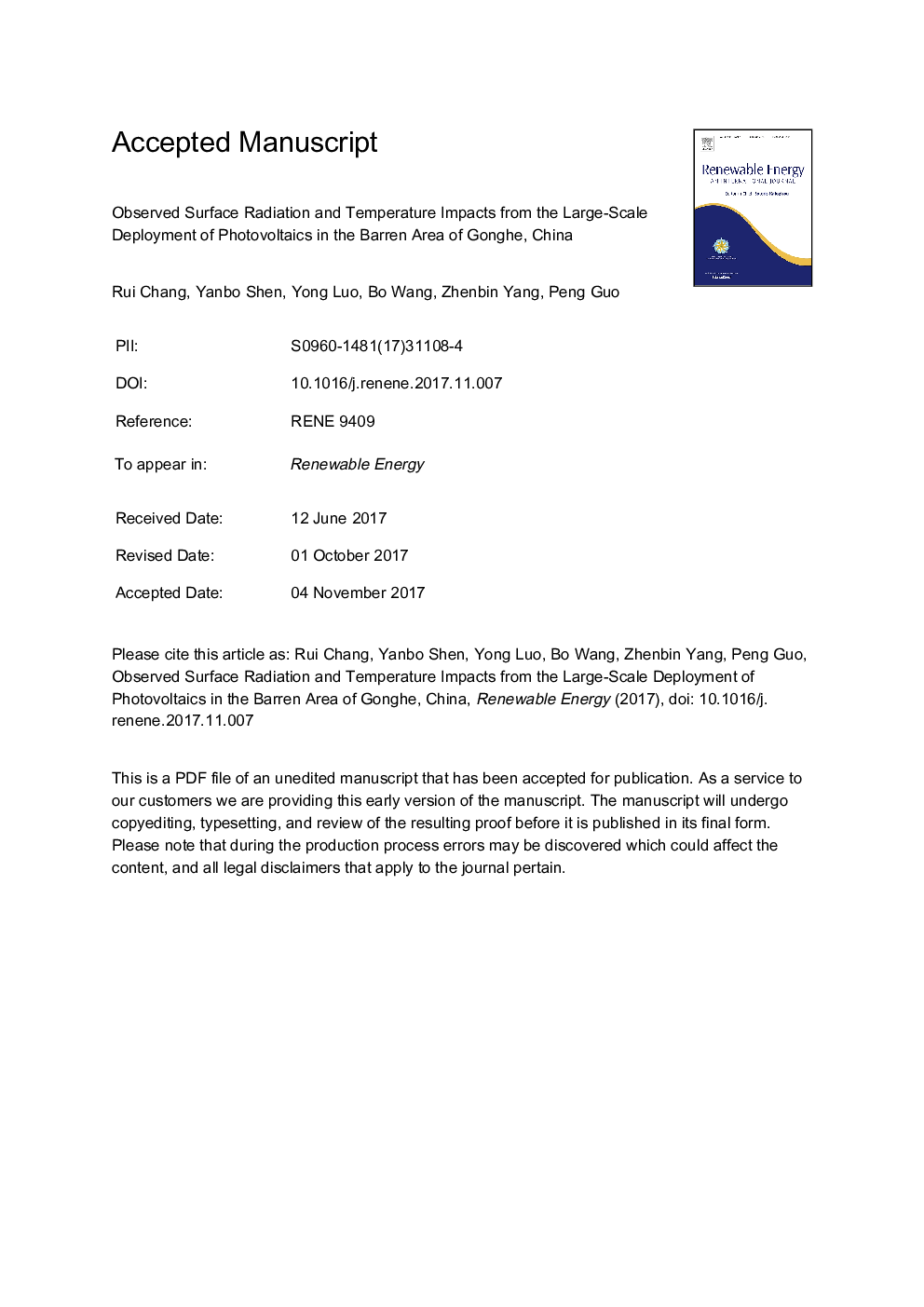| Article ID | Journal | Published Year | Pages | File Type |
|---|---|---|---|---|
| 6764930 | Renewable Energy | 2018 | 17 Pages |
Abstract
As the installation of large-scale photovoltaic (PV) facilities in the barren area of Gonghe, China, would cover a substantial portion of the Earth's surface with PV panels, concerns exist about the extent to which PV plants induce unfavorable surface radiative effects from the change in land use. In contrast to the theoretical calculations and model simulations of previous studies, parallel observations derived from in situ experiments spanning two contrasting land surfaces in Gonghe, consisting of a natural barren surface and one covered with PV panel, provide new insight into the potential impact of large-scale PV plants on the surface radiation and temperature. The novel results presented here are as follows. (1) The specific variations of the surface shortwave radiation components enable the PV panels to serve as energy sinks throughout the whole year, especially in the warm season. (2) The cooling of the land surface associated with the PV plant is related to the physical shading by the PV panels and the solar energy conversion. (3) The enhanced temperature of the surface of the PV panel heats the adjacent ambient air, which may subsequently drive a PV heat-island effect. Moreover, recommendations for an improved experimental design are presented. Our findings provide a solid basis for the parameterization of a PV plant in numerical models, with the view to delivering a more realistic quantitative and practical guidance for the development of the solar industry in the future.
Keywords
Related Topics
Physical Sciences and Engineering
Energy
Renewable Energy, Sustainability and the Environment
Authors
Rui Chang, Yanbo Shen, Yong Luo, Bo Wang, Zhenbin Yang, Peng Guo,
